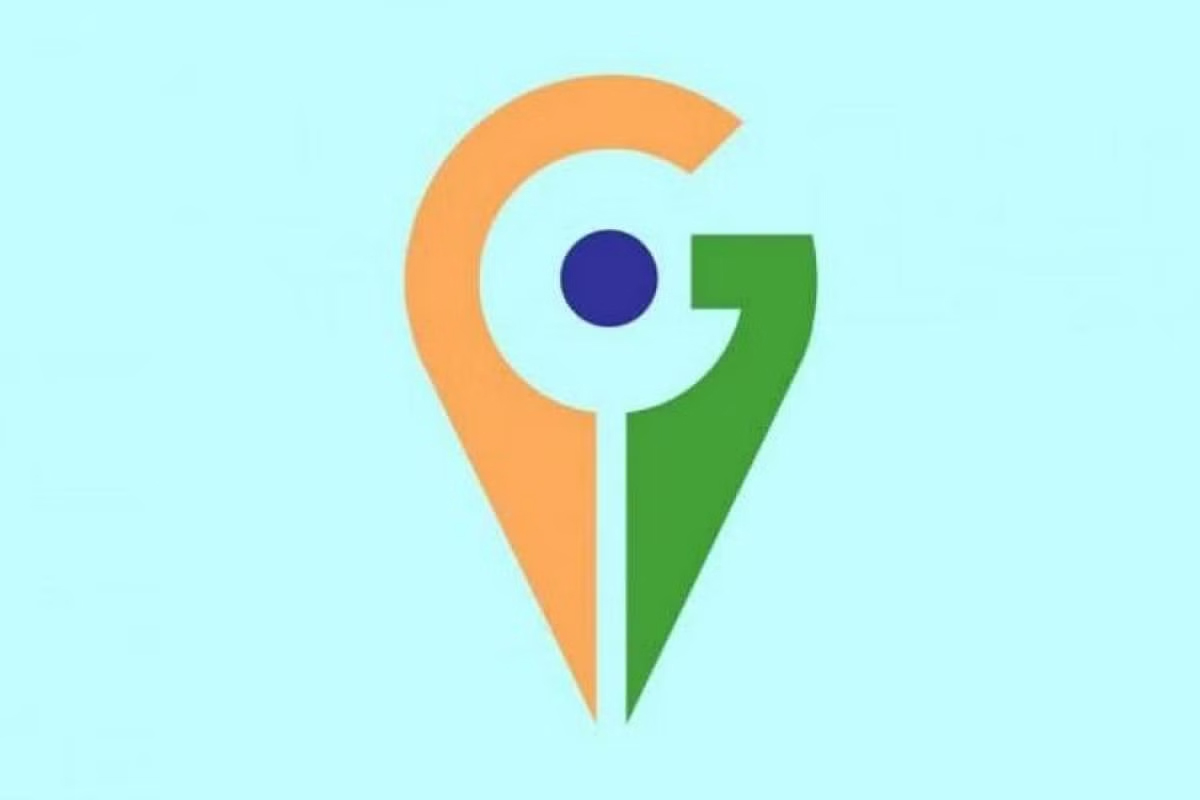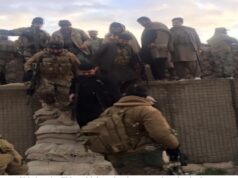Geo-Tagging and One District One Product

By Col Satish Singh Lalotra
‘When everyone is included, everyone wins’
—Jesse Jackson.
We are living in an age which is changing at a rate that was inconceivable a few decades back. This change has triggered spiraling aspirations for a good quality of life and better economic opportunities the world over. India being no exception in this regard. Having entered the so called ‘Amrit kaal’ as reflected by the Government of the day,it will provide blueprint and be foundational to the progress of India at 100.
We are aspiring to be a $ 20 trillion economy by 2040 and a global economic power in the next 3 years. The above stipulated aspiration will require a concerted effort and tapping the potential of every citizen, including the marginalized groups of women, children, the elderly, and persons with disabilities (PwDs) to become an active contributor to India’s growth. But what exactly the above mean in tangible terms? It means a 360- degrees adoption of the principles of inclusion.
This would involve reforms in legislation, creation of robust regulatory mechanisms, strategizing inclusive financing and budget allocations, implementation of pilot projects, fostering capacity building, and more importantly forging a strong intent in the entire value chain of rural and urban service delivery starting from the remotest of districts of India.
Since the time country became independent more than seven decades back, this value chain of rural-urban service delivery has been afflicted with the whims and fancies of those masquerading in Lutyen’s Delhi each touting his or her style of functioning.
India with a population at a burgeoning limit of 1.4 Billion and residing in more than 6.5 lakh villages distributed in little more than 766 districts has never been shorn of its inherent talent. Though our foreign occupiers tried their level best to stymie this talent, it goes to the tenacity of this country’s population which protected the same even at the cost of their very being.
In order to achieve the above stated goals, the present Modi Government had laid its development plank on 3 (three) legs-targeted beneficiary selection through the use of socio-economic caste census(SECC) data, electronic funds transfer and geo-tagging of assets and works.
While the first two fit in predictably as far as attempts to usher in transparency and efficiency are concerned, it is the twin concepts of ‘Geo-tagging’ and ODOP(One district one product) that has been associated with the implementation of welfare initiatives and been the hallmark of the Modi government as such.
My article particularly lays stress on these twin concepts that has been in the forefront of an equally important facet of a very diverse country like India-the concept of inclusiveness that in turn binds the country as a an entity in itself.
I have in particular taken Jammu & Kashmir as a template for these twin facets to show their spread and accuracy and how besides being the engine of growth and inclusiveness in their outreach to the remotest part of this erstwhile state, it has also been a path breaker in fomenting a sense of inclusiveness amongst those people who were hamstrung due to geo-political compulsions.
The first scheme that experimented with Geo-tagging was the ‘Mahatma Gandhi national rural employment guarantee act (MGNREGA) – the congress -led UPA government’s marquee rural jobs scheme that promises 100 days employment every year to each village household.
It was felt that the assets created under this scheme, like ponds and small dams were neither durable nor always fulfilling a need. Officials explained how a pond was dug up several times, or a road re-laid more than once since there was no way to monitor the assets on a real-time basis.
Here came in the process of Geo-tagging that plugged all plausible loopholes in one go. The idea was to use mobile -based geo-tagging and a geographical information system (GIS).
Towards this end, the central government worked in association with ISRO’s ‘NRSC – National remote sensing Centre’ at Hyderabad which used a software platform, Bhuvan that allows users to explore a 2D/3D representation of the surface of the earth.
Geo-tagging uses latitudes and longitudes to precisely locate where an image is taken. It gives reference points for users to analyse satellite data. One can choose a point and there are high -accuracy GPS equipment that can pin point the location with accuracy in centimeters.
Though the concept of Geo-tagging came quite late in the erstwhile state of Jammu and Kashmir ,it was quick on the uptake and as on date stands number one (1) in Geo-tagging of Cluster development projects (CDPs) in India ;implemented by the union ministry of Micro, small and medium enterprises(MSME).
This achievement of Jammu and Kashmir will result in faster approval of projects and timely release of funds from the Central Government, which will result in faster growth of MSMEs across J&K.
Union ministry of Micro, small and medium enterprises is implementing ‘Cluster development projects’ in the country including J&K through which central government’s grant up to 80% is applicable for common facility center projects and 70% for development of industrial estates. J&K has received 10 projects from the ministry of MSME for the development of Industrial estates and common facility centers (CFCs) .
MSME-DFO Jammu, field office of the union ministry of MSME takes lead role in the implementation of various schemes including cluster development projects for the benefit of the MSME sector of the region.
The total project value of the CFCs and IDs in J&K is rupees 90.73 crores approximately. Recently the Union Ministry called for Geo-tagging all the projects under the MSE-CDP for all states including the UT of J&K.
An app has also been developed by the ministry, used for tracking the performance, including completion, percentage of completion of the projects sanctioned under MSE-CDP which is monitored online based on the photographs taken through the Geo-app.
Currently Geo-tagging is being used in a range of schemes as explained above -MGNREGA, Pradhan mantri awaas yojna (Grameen) ,Pradhan mantri Gram sadak yojna (PMGSY) ,for toilet construction under ‘Swachh Bharat as well as for highways and urban housing.
As if this was not enough in a corruption laden environment of Jammu and Kashmir for the first time Geo-tagging and Go-referencing of retrieved lands has been undertaken of around 4 lakh kanal state and ‘Kahcharai’ land in the massive anti-encroachment drives few months back.
This included the land given away under the dubious ‘Roshni land scheme. It was simply unthinkable under the previous dispensations of the erstwhile state. What more bigger example of inclusiveness for the betterment of common masses than this, where in explicit instructions had been given not to harass the innocents and spare not the high and mighty.
Though the Government actions had met with stiff opposition from the guilty and corrupt, this Geo-tagging /Geo referencing of retrieved and encroached land has emboldened the moves of the authorities who flaunt this achievement as their ‘Sine qua non’ towards social and equitable inclusiveness across the grain of Jammu and Kashmir.
Jammu and Kashmir has recently notched a bit higher in its efforts to register the various iconic products under the Geo tagging scheme that were known worldwide but met their glory under the sun only now.
It’s a travesty of justice that the world famous ‘Basholi art paintings’ once a connoisseur’s choice across the globe with some originals kept at the ‘Victoria and Albert museum, London as also at Fogg art museum, Cambridge, Mass have now only in the month of April 2023 got the GI-Tagging.
A historic first in the annals of Jammu region for handicrafts. The NABARD-National bank for agriculture and rural development ,Jammu granted the GI -Tag to the Basholi art paintings after a long legal hassle.
The main protagonist of these paintings,’Nainsukh’ must be turning in his grave and showering his blessings on NABARD to take him to the high pulpit of accolades which escaped him during his lifetime.
So are the numerous Basholi art painters scattered in the hills around this quaint town who must be thanking their stars for affording them glory which was rightfully theirs but denied.
Local specialties of Jammu region like ‘Bhaderwah Rajmash, Sulai honey of Doda and Ramban, and Rajouri’s ‘Chikri wood craft too find themselves in this much belted list of GI-Tag.
As for Kashmir region the place already has made its space in the GI-Tagging environment with stuff like ‘Mushqbudji rice from Anantnag, Kashmir Saffron, Kani shawl, Kashmiri pashmina, Kashmiri hand knotted carpet etc. GI-Tagging has been a boon to the craftsmen, local artisans etc to make them available their products worldwide with an assurance that the quality of the products will be covered by the IPR/Intellectual property rights rules.
This makes them an equal partner in the process of inclusiveness and not a fringe player in the country’s economy. As far as the second concept of inclusiveness undertaken by the Modi government is concerned it too lays stress on ground level working and participative action at all the 766 districts of the country by way of enhancing the value of single most important product of that particular district and making it the ‘Sine qua non’ of that area.
It aims at balanced regional development across all the districts of the country. Till date about 1102 products from all the 766 listed districts have been identified.
In fact this ODOP scheme is too basically complementing the earlier scheme of ‘GI-Tagging’ since the aims of both these schemes are co-terminus i.e fostering a sense of ‘Inclusiveness’ in the country by way of integration of all the workers, artisans, craftsmen & craftswomen living in the nook and corners of India.
Some of the ‘excellent firsts’ of this ODOP scheme includes facilitating a consignment of 30 tons of ‘Lakadong turmeric’ from Shillong in Feb 2022 , Walnuts from Budgam (J&K) quantity 2000 kgs under the ‘Import substitution’ in collaboration with JKTPO sent to Bangalore etc.
Multiple ODOP products were on display at ‘World economic forum’ Davos ,Switzerland in January this year at the Indian pavilion. This initiative gained traction with roping in of the Indian embassies which helped promote exports and public procurement.
The fact that when a farmer or entrepreneur watches on the national TV his product having evinced interest by world leaders at Davos, Switzerland his chest swells with pride that leaves him with a sense that he is not being left out from the race of development and the Government of the day cares for him.
No wonder the Government of the day with some thoughtful actions on its behalf has been going hammer and tongs to achieve its main twin objectives of financial cum social inclusiveness as also national integration which is a natural outcome of the former. No wonder Jesse Jackson had rightfully said…’When everyone is included, everyone wins’.




